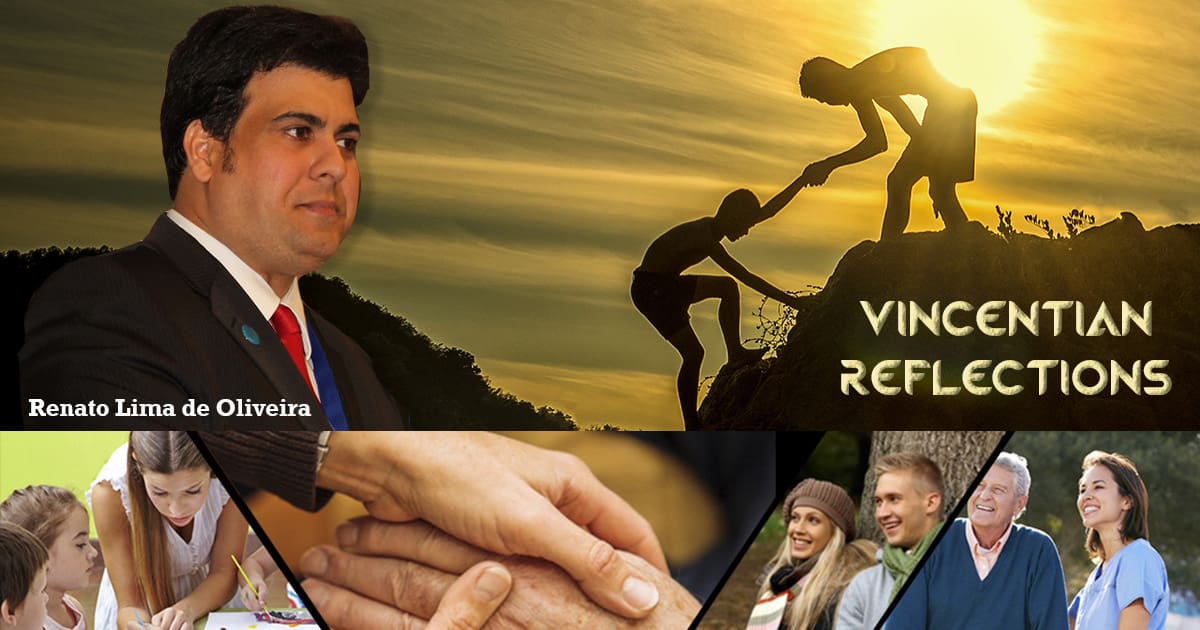The first impression is what counts. We, as members of the Society of Saint Vincent de Paul, would do well to consider those words when we receive visitors to our conferences, councils, works and programs/projects. If we want these people to become aspirants and, later, members of the SSVP, we must pay attention to certain details that could compromise the image of our organization.
On one occasion, a person who visited us told me that he was not a member of the SSVP because he believed that the atmosphere of the Conference was very somber and extremely conservative. Another told me that he did not see that his opinions and ideas were valued. A third stated that he considered the meetings boring and unattractive. So, we must ask ourselves: how are we welcoming potential members in our Vincentian groups?
The dictionary states that to welcome means to lodge, to receive someone, to protect, to give shelter. When we receive a person in our home, we try to put everything in order: the furniture is cleaned, the toys of the children are put away, clothes are removed from the clothesline, dirty dishes are washed and placed in their proper place, etc.
Do we have these same concerns with regard to our conference? Are our rooms clean and airy? Are the articles in the clothing and food dispensary arranged in an orderly manner? Are the walls of the parish hall that we use … are those walls painted? Are our meetings peaceful and stimulating? Are our visits really helpful, or are they merely a time for some hand-out? Young people and aspirants, do they have a role to play in the day-to-day workings of the Conference? Are they given a weekly mission? Do we try to improve external impressions or are we terribly attached to our own opinion? Do we accept suggestions, or do we simply say that’s how it’s always been done?
To welcome the visitor is to plant the seed in fertile soil. As it is written in the Gospel of Saint Matthew: “A sower went out to sow. As he sowed, some seeds fell on the edge of the path, and the birds came and ate them up. Others fell on patches of rock where they found little soil and sprang up at once, because there was no depth of earth; but as soon as the sun came up they were scorched and, not having any roots, they withered away. Others fell among thorns, and the thorns grew up and choked them. Others fell on rich soil and produced their crop, some a hundredfold, some sixty, some thirty.” (Mt 13:3-9).
This seed will grow (the applicants) and bear fruit (the Vincentian brothers and sisters) if it falls on good soil, that is, if it finds a “fertile” Conference.
We have to do everything in our power so that the newcomers have a good impression of the Vincentian work, so that, if they feel called, they can join this international movement of lay people inspired by the charism of Saint Vincent de Paul and dreamed by Blessed Antoine Frederic Ozanam. Visitors and future aspirants need to understand the mission carried out by the Conferences and the challenges we are willing to face for the construction of the Kingdom.
Some small tips that can give a new “flavor” to our meetings:
- at the beginning or at the end, sing a Vincentian hymn;
- invite those present to greet each other with the «Peace of Christ» (the same as in Mass);
- invite the visitor to direct the spiritual reading, or make a comment about it;
- give a copy of the Rule to the new members and encourage them to read the rules … then encourage a dialogue on the principles that are outlined in the Rule;
- delegate tasks, especially those related to the life of the people assisted;
- monthly, prepare a special fraternization event with those members who celebrated their birthday during the month, praying together the Rosary.
In short, much can be done so that the “first impression” is the best possible impression. That is what happened to me on April 16, 1986, when I met the members of the St. Thomas Aquinas Conference in Campinas, São Paulo, Brazil. That was love at first sight.
Renato Lima de Oliveira
16th General President of the Society of Saint Vincent de Paul






Thank you for the opportunity to learn more about the SSVdP organization and what Vincentianism is all about.